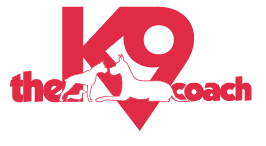How to Teach Impulse Control
Teaching Impulse Control will save you a lot of frustration
Teaching impulse control goes a long way in establishing leadership and mental challenges for your dog. It will translate to many other areas of day to day life.
Wait! command is different in my opinion in that the dog is eventually going to get to have the thing they are waiting for. In Leave It! for example, they never get the thing they are told not to touch.
Wait! is very easy to teach.
At meal time, ask you dog to sit as you hold his bowl of food in your hand.
Ask your dog to Wait! You can even hold your hand up as if to say “stop”
As you bend over to put the bowl down for serving, if his bottom leaves the ground, stand back up with the food bowl. Don’t put the food down.
Say “No. Wait”
Repeat until your dog holds his bottom on the ground as you put the food down (including puppies as young as 7 weeks)
Then give a cue word like Eat
Stand and walk away
The first time you place the bowl down, say Eat! as soon as the bowl hits the ground. Practice at that pace until your dog starts to understand the cue word. Then increase the pause between putting the bowl down and giving the release cue.
Make him wait a couple of minutes. Start to even move further away from the bowl before your release him. You should be able to have your dog wait even as you leave the room!
See Our Feeding Protocol
I don’t make them wait very long. Maybe a minute or two. Just to instill impulse control. I once had a friend pet sitting for me and she forgot to tell Vinnie to eat and he waited about 15 minutes! Needless to say there was a pool of drool on the floor.
I’ve seen some people use a word like “Amen!” and in essence teach there dog to say the blessing. It doesn’t matter what words you use prior to the cue word, they simply have to wait for the cue!
Wait for Doors
Apply this same technique as you ask your dog to wait for the door to open. Doors include the crate, access to the yard or a walk, exiting the car, etc. Simply start to open the door, and if his bottom leaves the ground, the door closes. Practice until the dog can sit and wait with the door wide open without exiting until you give a cue.
Note: For the doorway exercise, always practice on-leash until your dog is reliable. It is also best to teach your dog to walk through slowly and sit on the other side vs bolting out when the cue is given.
Once your dog is sitting reliably, change to a Down! or even a BOW! or other trick if your dog has learned new skills.
Over time you should be able to ask him to wait to take a treat from the floor. Or wait for you to throw a ball. Wait to get his leash on. Wait to Exit the Crate. Wait for anything you ask!
It’s also important for you to wait to give these cues until your dog is relaxed and calm. You won’t want to create a level of over-excitement at doorways or for food. For a game like ball, it may be ok. If you’re training a scent and tracking dog that level of excitement is actually encouraged.
Also, See The Exercise Sit On the Dog And The Importance of Duration Work.
You may also find help in The Power of the On/Off Switch
Have fun and train your dog!
